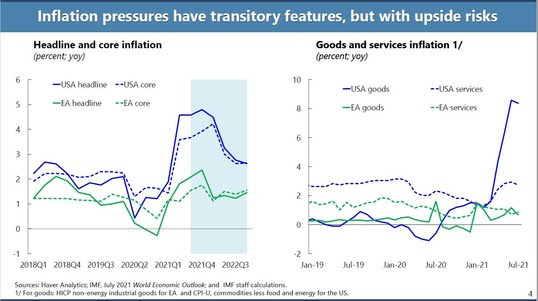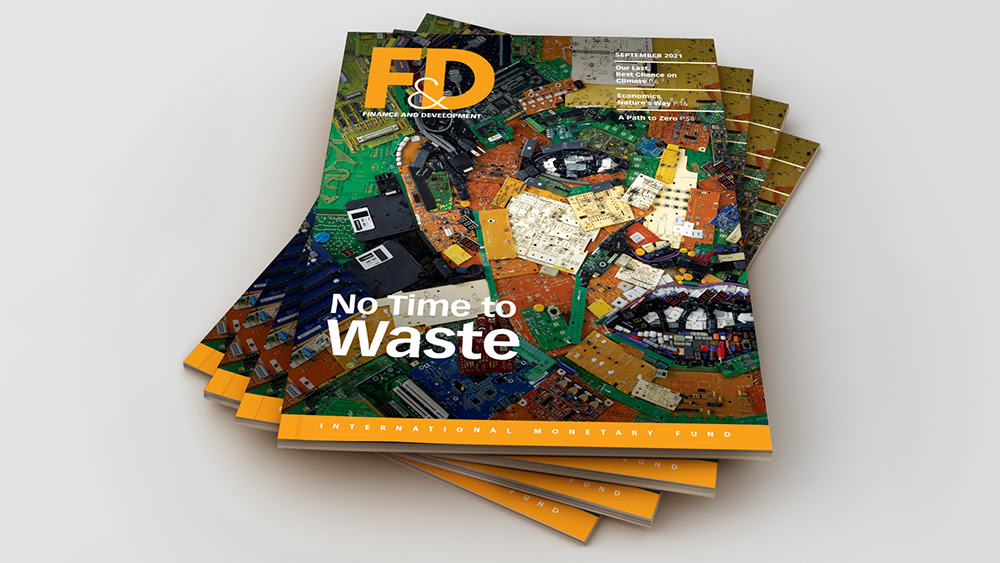Special Drawing RightsA Shot in the Arm While the Weekend Read was on hiatus, something big happened. On August 23 the IMF's largest allocation of Special Drawing Rights (SDRs) in history came into effect. The allocation of the international reserve assets is equivalent to roughly $650 billion in much needed liquidity to global economic system amid an unprecedented crisis. About $275 billion is going to emerging and developing countries, of which low-income countries will receive about $21 billion--equivalent to as much as 6 percent of GDP in some cases. "SDRs can help countries with weak reserves reduce their reliance on more expensive domestic or external debt. And for states hard pressed to increase social spending, invest in recovery and deal with climate threats, they offer a precious additional resource," IMF Managing Director Kristalina Georgieva wrote in a Financial Times op-ed. How Does it Work?In one basic example, a country can exchange its SDRs with another country and receive foreign currency reserves. Those foreign currency reserves could then be used to purchase vaccines.  Making the Most of ItThe IMF is encouraging countries with stronger economies to voluntarily "channel" SDRs to the poorest and most vulnerable nations. The IMF is also engaging members on a possible new Resilience and Sustainability Trust that could use SDRs to help poor and vulnerable countries with structural transformations, such as coping with climate-related challenges. Another possibility could be channeling SDRs to support lending by multilateral development banks.  READ READ
Read the Blog Read Managing Director Kristalina Georgieva's Op-Ed  LISTEN LISTEN
IMF Director of Strategy, Policy and Review Ceyla Pazarbasioglu explains the significance of the SDR allocation in this podcast MacroeconomicsHow Long is Transitory? IMF Chief Economist Gita Gopinath recently explained the outlook on inflation. So what does it mean when current inflation trends are expected to be transitory? "I don’t mean we’re talking about a month or two. This goes on, especially in the US, into next year. Towards the end of next year the last data point there is about 2.6 percent in the fourth quarter," she said at the Bruegel Annual Meetings. She cautioned that the inflation debate doesn't follow one storyline, even for advanced economies. However, one important goal should be anchoring inflation expectations. Maintaining Credibility"It’s very important to signal that agility to move quickly, of course to track all these indicators, and to credibly communicate what will trigger movements and then to follow through and act on it," she said. "This is hard-won credibility and in these times, which are unique in terms of the recovery, it’s important to follow through and preserve that." The TakeawayGopinath hit on similar themes in her presentation late last month to the Jackson Hole Economic Symposium. Unprecedented fiscal and monetary support made the pandemic-driven economic crisis less severe but has triggered inflation and debt concerns. "Monetary & fiscal support are both essential for macroeconomic recovery + central bank independence and the taboo against monetary financing has served countries well," she tweeted.  READ READ
Read Gita Gopinath's Bruegel Presentation Read Gita Gopinath's Presentation to the Jackson Hole Symposium  WATCH WATCH
View the Full Bruegel Event Finance & DevelopmentF&D: The Climate Issue Our Fall 2021 issue of F&D, produced in partnership with COP26, was just published. In this edition, we focus on the urgent need for climate action that can usher in a new era of sustainable development with expanded opportunities for people across the world. "No transition is easy. It will require compensating the workers and businesses that bear the cost of a green transition. It means breaking down political economy impediments to rapid progress. It depends on collaboration by citizens, governments, corporations, financial institutions, philanthropists, and the scientific community. Perhaps most important, it will require that world leaders expand their ambition and action, including mobilizing finance to help developing economies adapt to climate shocks," writes F&D editor-in-chief Gita Bhatt. A note of the stunning cover for this issue: Malaysian artist Nor Tijan Firdaus created an image of a young girl composed of discarded electronic components. The jarring composition creates a forceful reality of the consequences of human activity on the environment and climate.  READ READ
Read the Full Issue A Persistent Vaccine Gap | 

















































